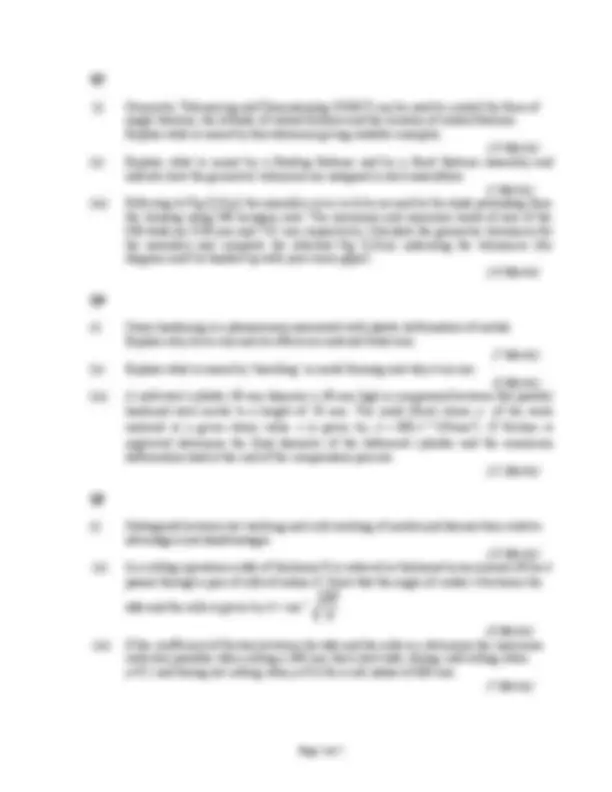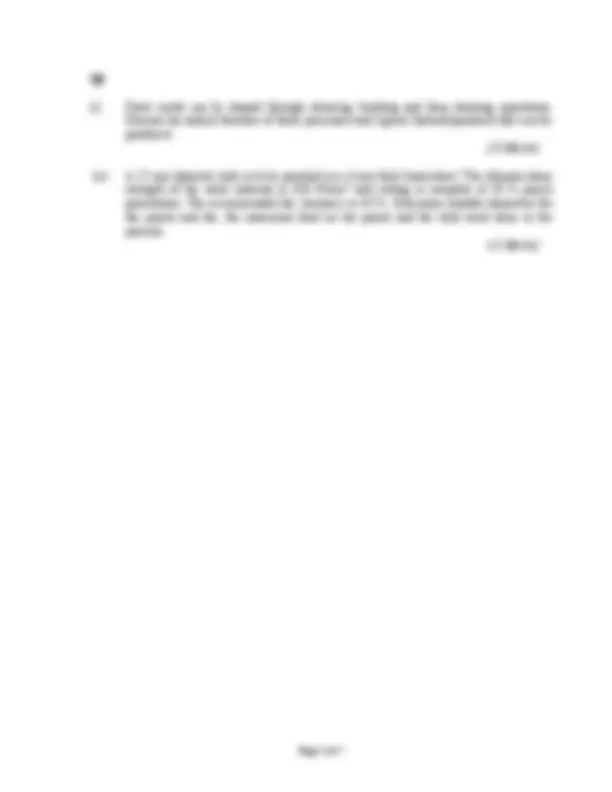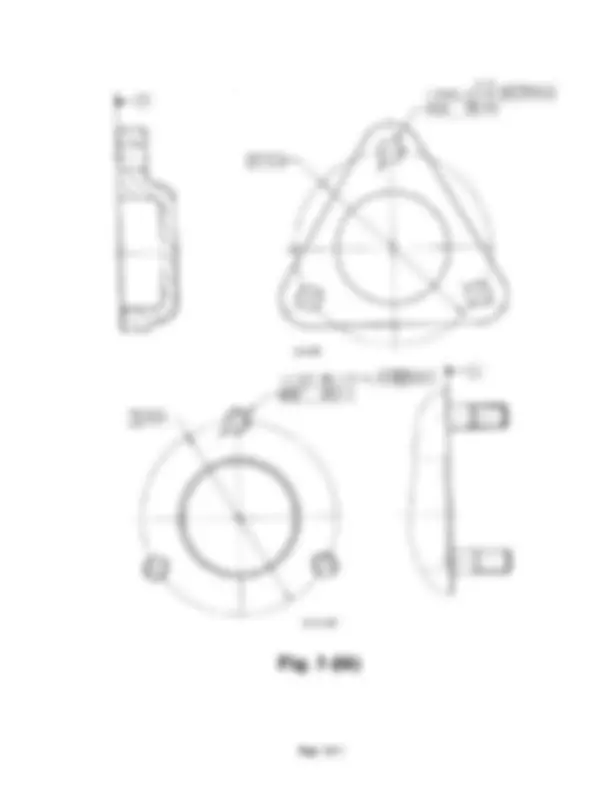





Study with the several resources on Docsity

Earn points by helping other students or get them with a premium plan


Prepare for your exams
Study with the several resources on Docsity

Earn points to download
Earn points by helping other students or get them with a premium plan
Community
Ask the community for help and clear up your study doubts
Discover the best universities in your country according to Docsity users
Free resources
Download our free guides on studying techniques, anxiety management strategies, and thesis advice from Docsity tutors
An examination paper from the cork institute of technology for the module manufacturing technology, focusing on topics such as orthogonal cutting, tool wear, geometric tolerancing, and material behavior. The paper includes five questions covering various aspects of manufacturing technology, including constructing merchants circle, discussing tool wear mechanisms and the taylor tool life equation, and calculating geometric tolerances for an assembly.
Typology: Exams
1 / 5

This page cannot be seen from the preview
Don't miss anything!




Semester 1 Examinations 2009/
Module Code: MECH
School: Mechanical & Process Engineering
Programme Title: Bachelor of Engineering (Honours) Mechanical Engineering Bachelor of Engineering Mechanical Engineering
Programme Code: EMECH_8_Y2 / EMECH_7_Y
External Examiner(s): Mr. John J. Hayes, Prof. Robin Clarke
Internal Examiner(s): Mr Matt Cotterell
Instructions: Answer FOUR Questions.
Duration: 2 hrs
Sitting: Winter 2009
Requirements for this examination:
Note to Candidates: Please check the Programme Title and the Module Title to ensure that you have received the correct examination paper. If in doubt please contact an Invigilator.
An orthogonal cutting test yielded the following data:
Cutting Force Fc = 625 N Feed Force Ff = 524 N Uncut chip thickness h = 0.10 mm Chip thickness h c = 0.26 mm
Width of cut w = 4 mm
From this data, construct Merchants circle and determine:
(v) Coefficient of friction on the rake face μ and
(i) Discuss the mechanisms that contribute to tool wear and how they are influenced by cutting sped; distinguish between continuous and interrupted cutting. (10 Marks)
where v (^) c = Cutting Speed (m/min) T = Tool Life (min) n = Tool Life exponent c = Constant
(iii) In a cutting test a cutting speed of 100 m/min yielded a tool life of 26 min. while a cutting speed of 60 m/min resulted in a tool life of 70 min. Determine the constants in the Taylor tool life and hence predict the tool life corresponding to a cutting speed of 150m/min. (10 Marks)
(i) Sheet metal can be shaped through shearing, bending and deep drawing operations. Discuss the salient features of these processes and typical features/products that can be produced. (10 Marks)
(ii) A 25 mm diameter hole is to be punched in a 4 mm thick brass sheet. The ultimate shear strength of the work material is 320 N/mm^2 and cutting is complete at 50 % punch penetration. The recommended die clearance is 10 %. Determine suitable diameters for the punch and die, the maximum load on the punch and the total work done in the process. (15 Marks)